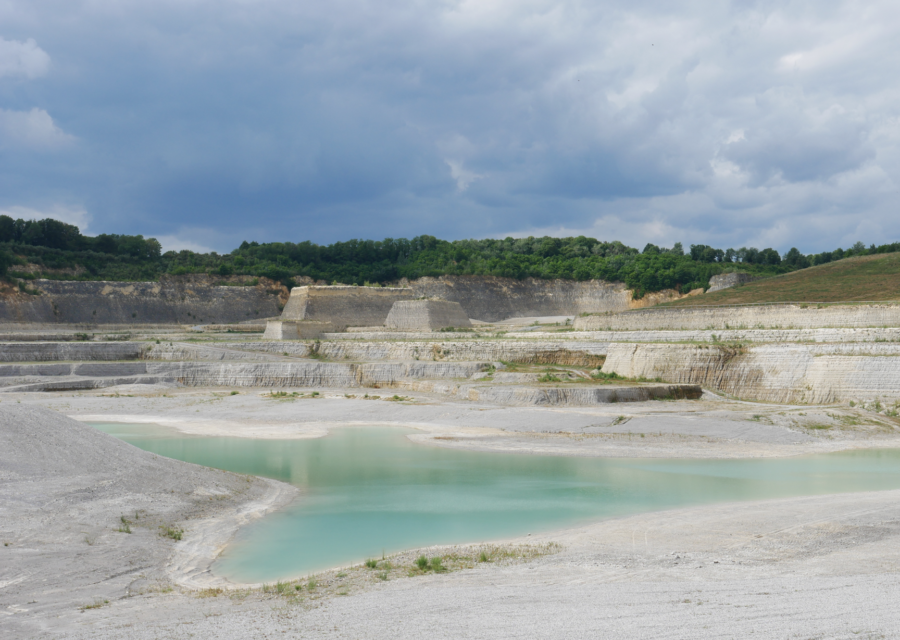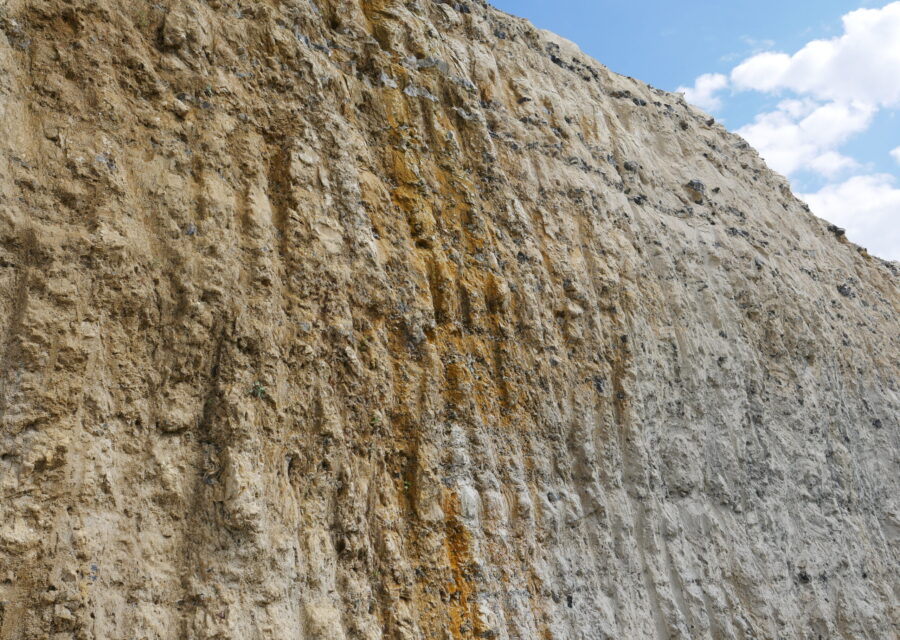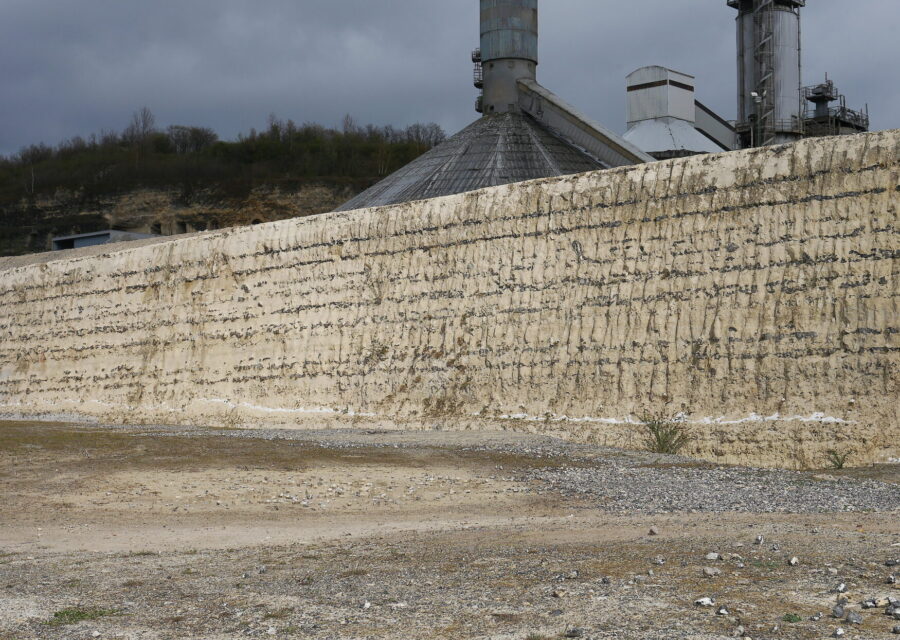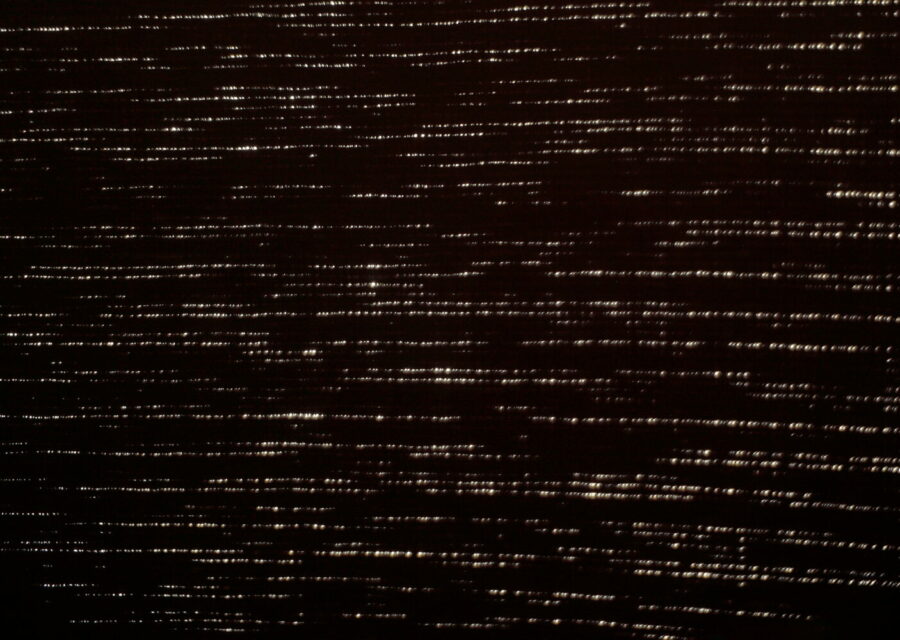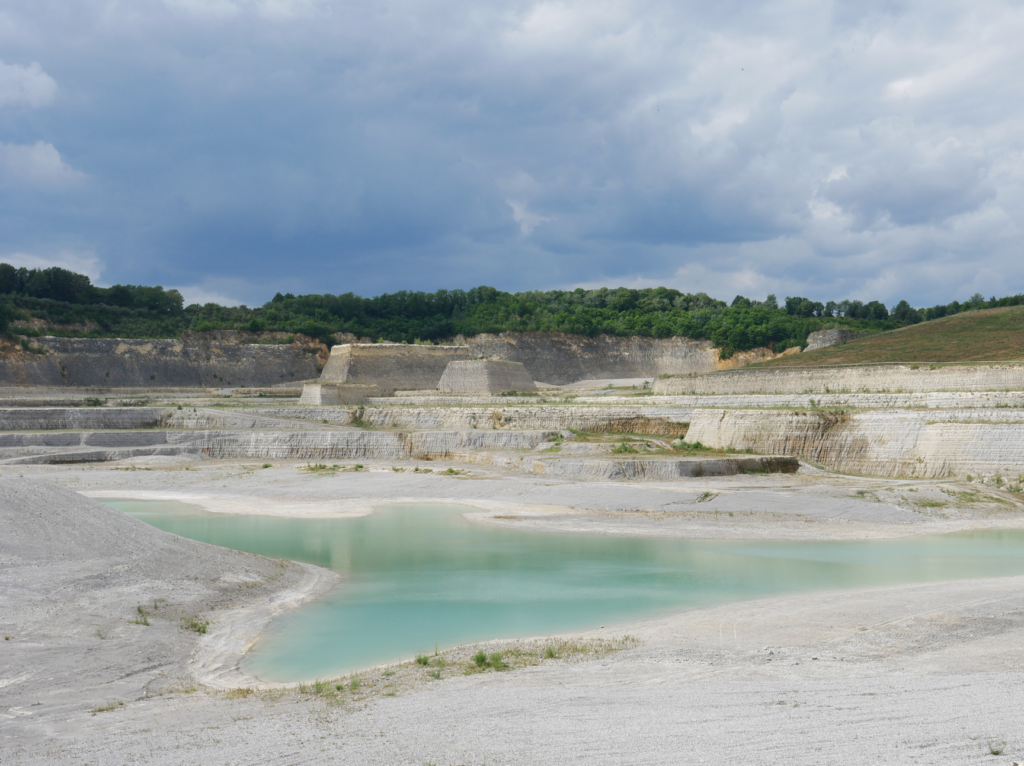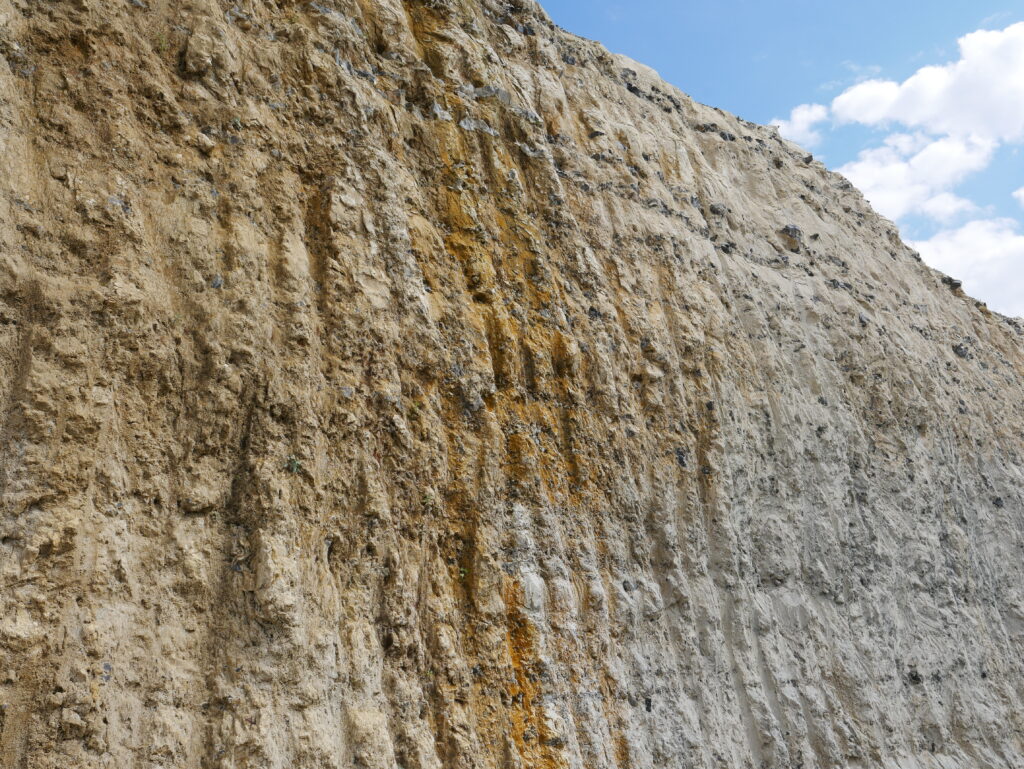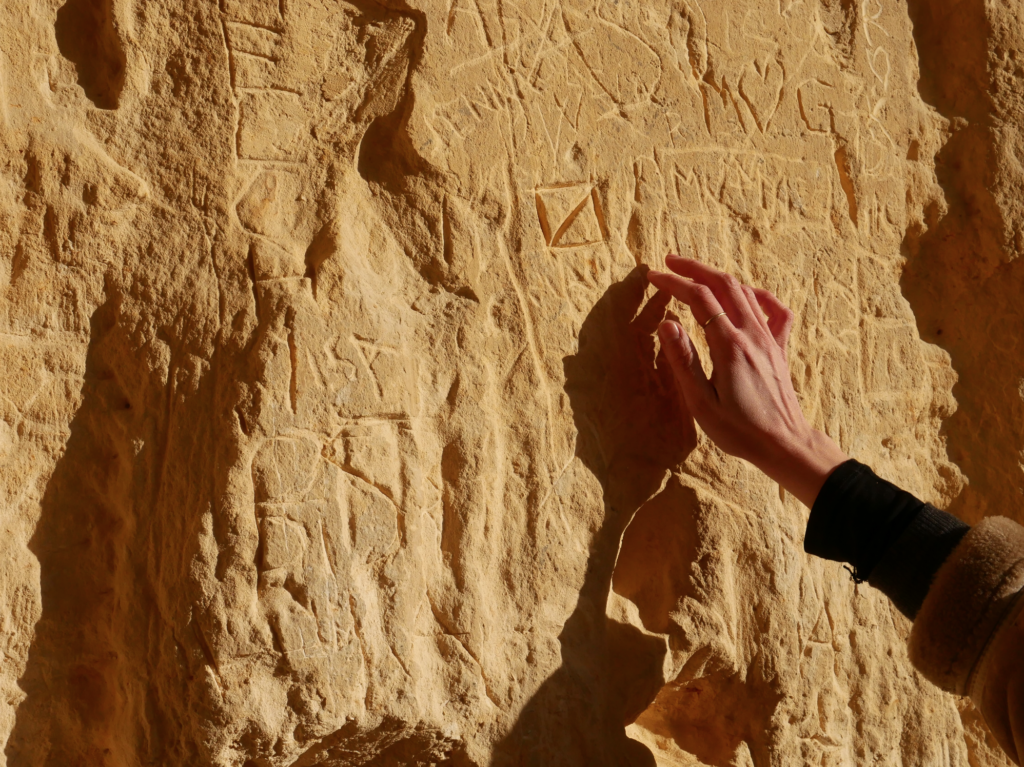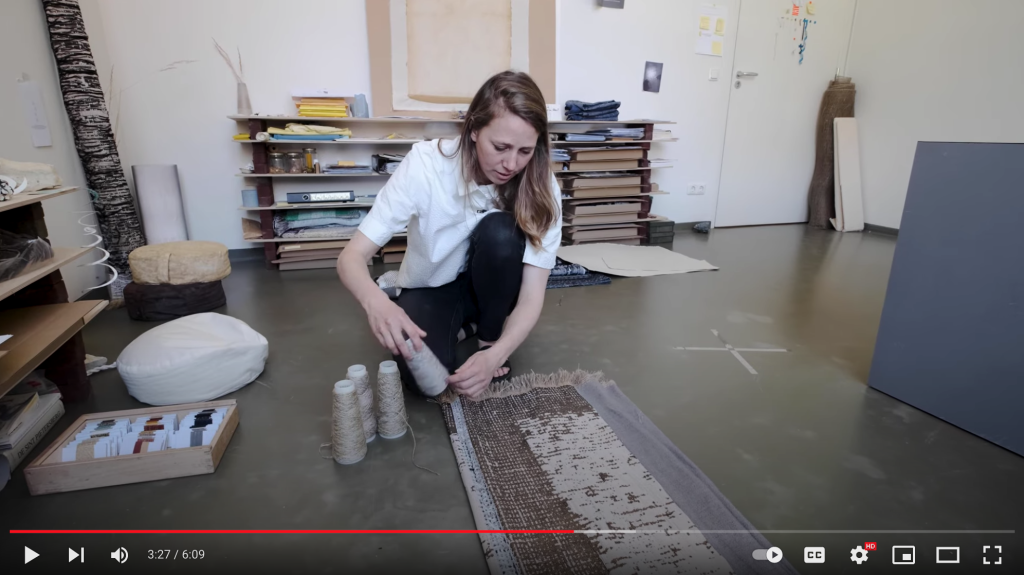1cm = 1000 years
One centimeter of limestone is — on an average — a compression of 1000 years material and time. This project investigates the notion of scale and time in the formation of the Earth through tapestry.
A tapestry is developed that addresses the industrial mining of the ENCI open-pit-quarry in Maastricht, The Netherlands.
During her Jan van Eyck residency Aliki has been making a weekly pilgrimage to the ENCI quarry in Maastricht. Once an important excavation site for marl stone, it has recently become a nature preserve. There is only one available footpath through the quarry. The ritual of making the walk each week reminds her of the continuous back and forth motion of preparing a warp.
One centimeter of marl is — on an average — a compression of 1000 years material and time. This project investigates the notion of scale and time in the formation of the Earth. A tapestry is developed that addresses the industrial mining of the ENCI open-pit-quarry in Maastricht, The Netherlands. The ENCI excavated in 100 year time a sedimentation process of ±70 million year that formed a combination of marl* (limestone) and flintstone**. The tapestry zooms in on the scale of matter and is a soft statement about raw material for architecture. It’s a quest on how to find home in the strata.
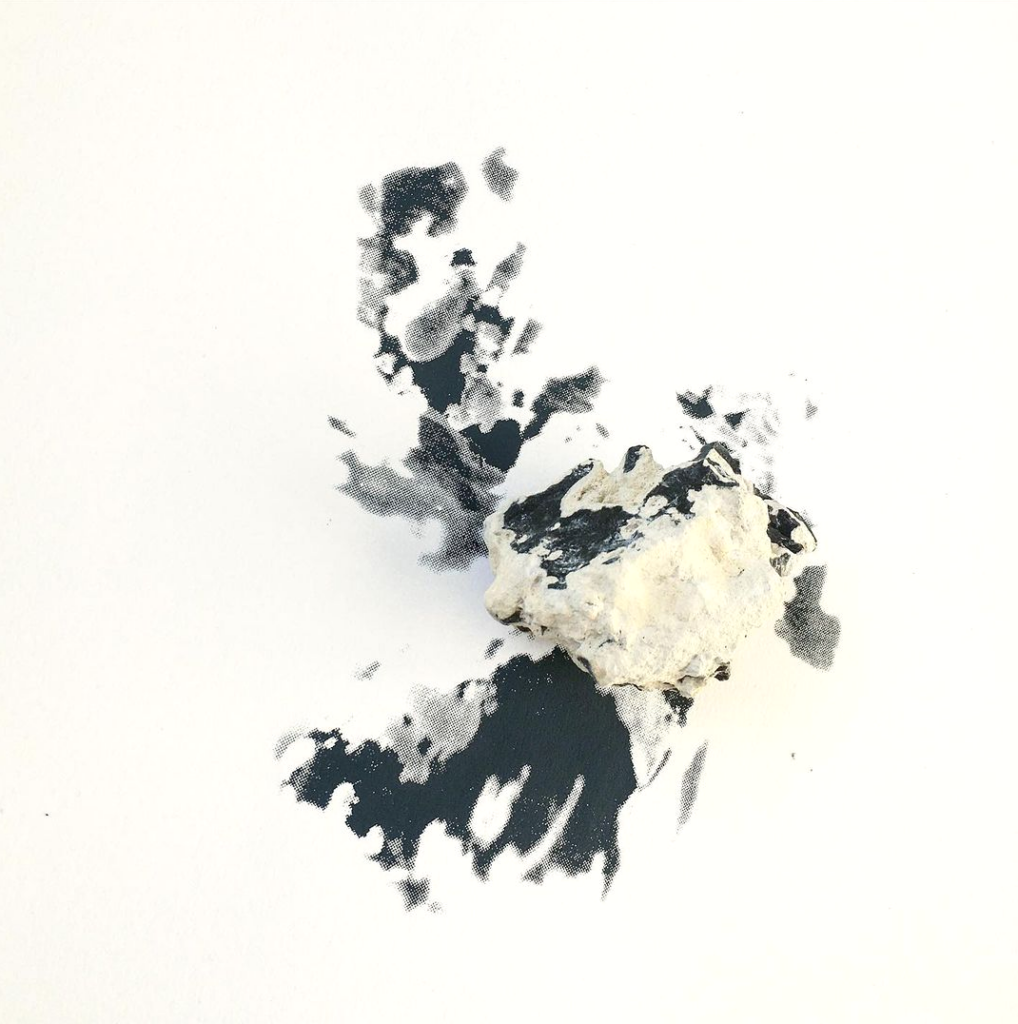
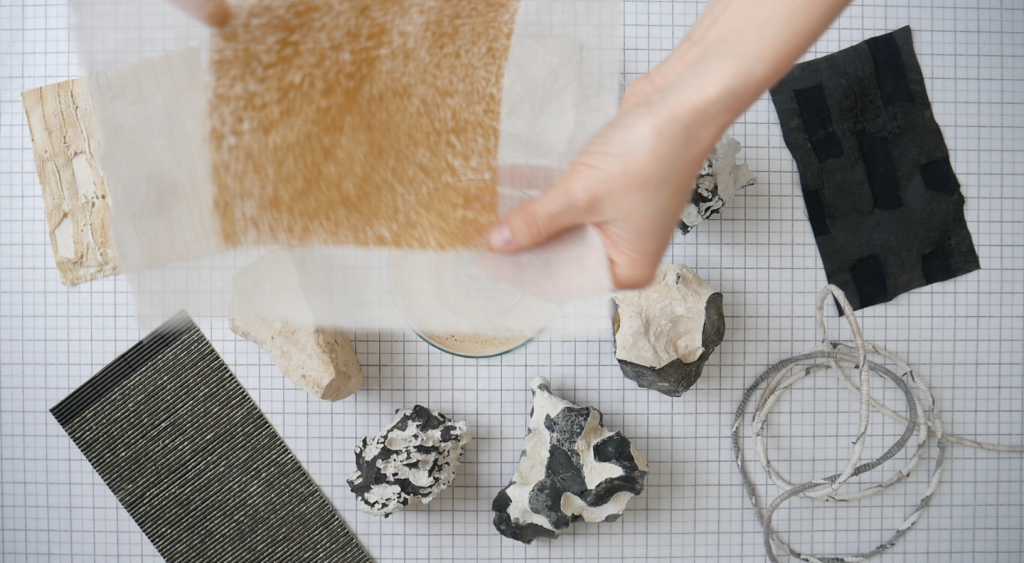
The process rather than the result is at the heart of this project.
Screen printing tests carried out with marl produced a visual language that remind of programming weaves on a loom. In the TextielLab in Tilburg (NL) is experimented with different ways to build up the fabric, using different materials and without ‘unnecessary’ decorative details. For this project, the combination of beige paper and linen in a plain weave, most closely resembles the colour and texture of marl. The stiffness and coarseness of the yarns give the fabric a monumental character.
Both the front and back of the fabric is an ‘image’, with the extra floats on the back giving the impression of water. This is a reference to the way marl is formed on the seabed. The coarser yarn and two-tone design produced larger floats in various places, allowing the thick yarns to form beautiful slubs (irregular textured areas), just like the marl in the ENCI quarry.
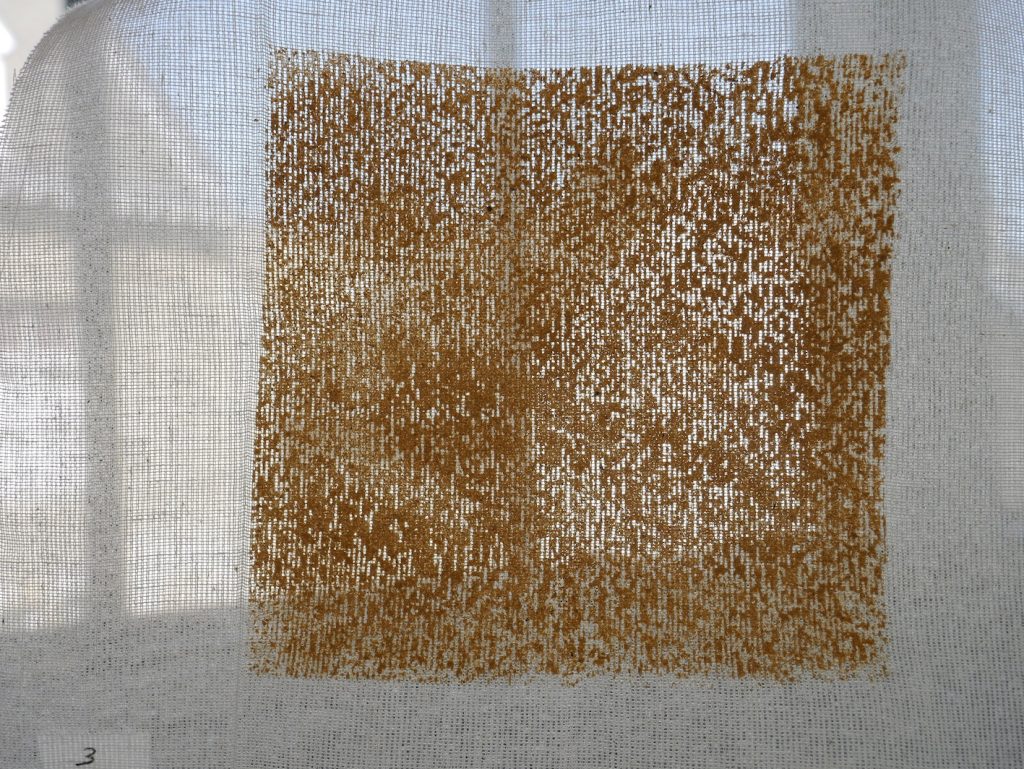
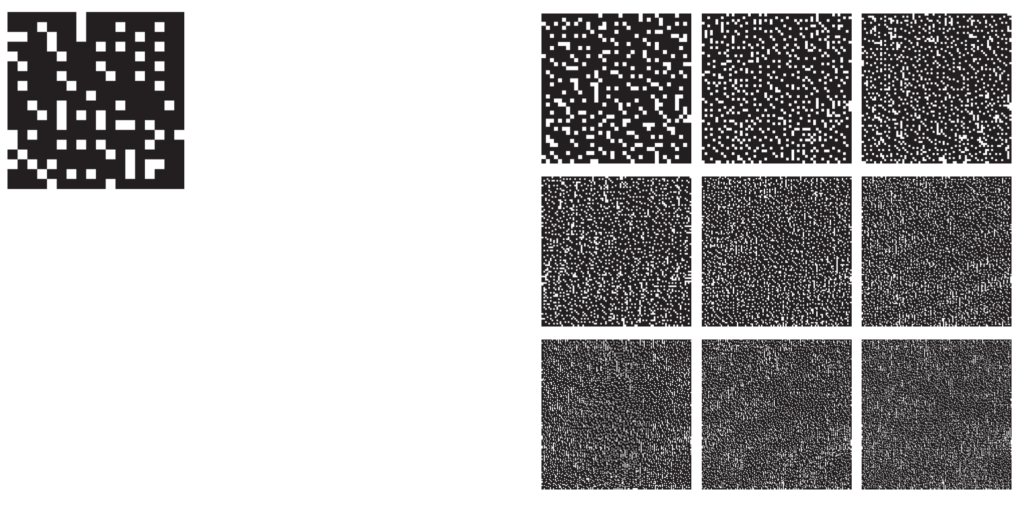
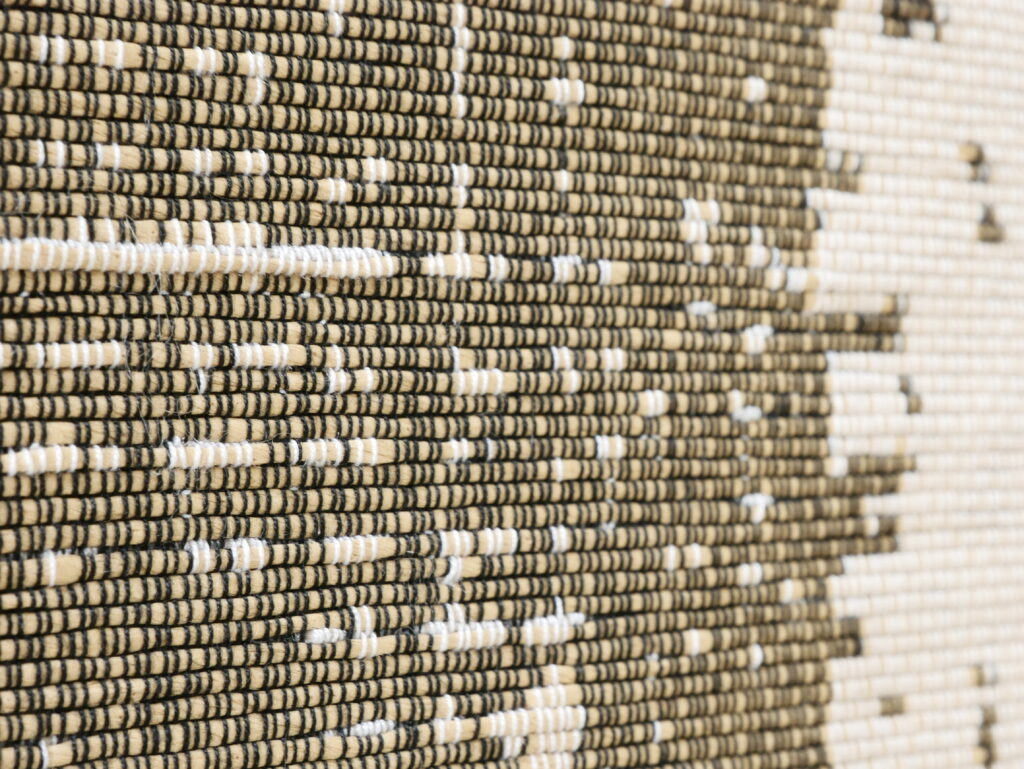
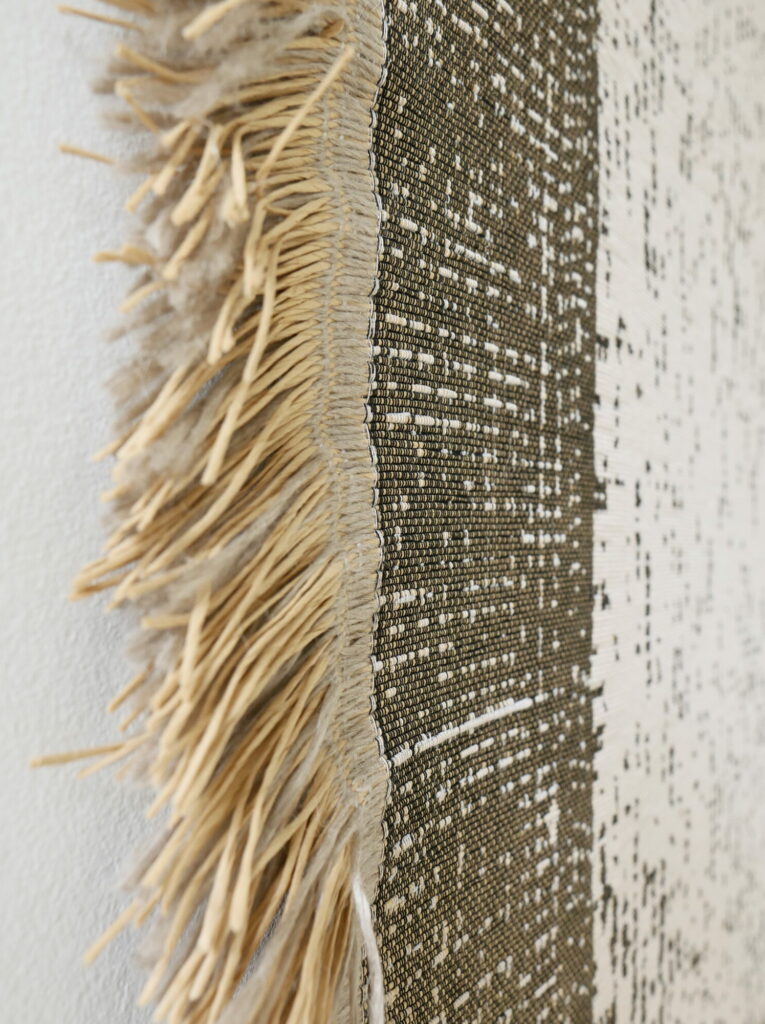
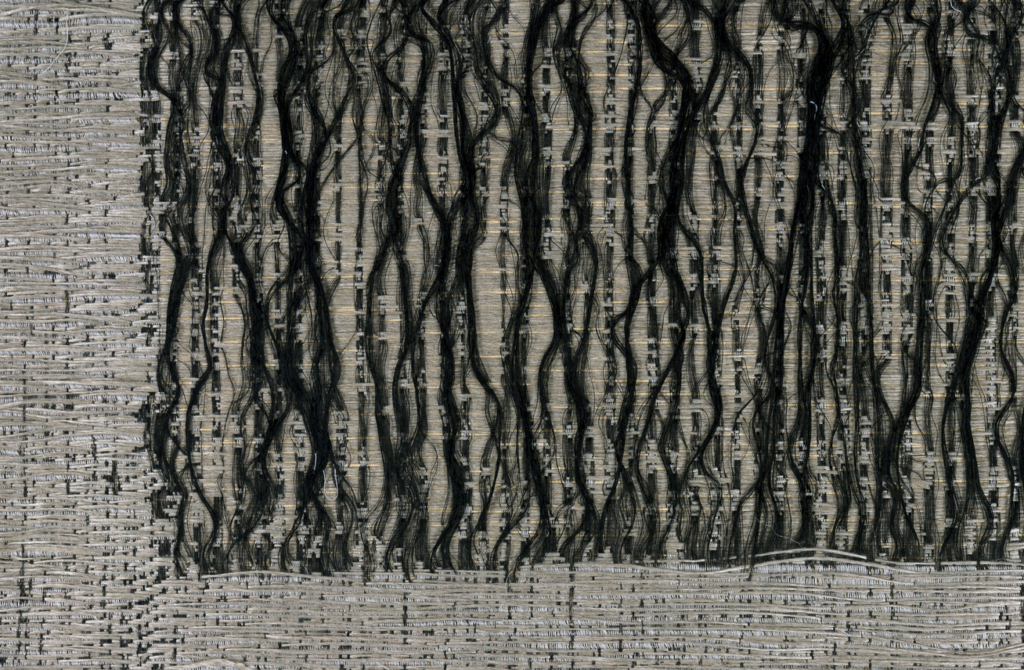
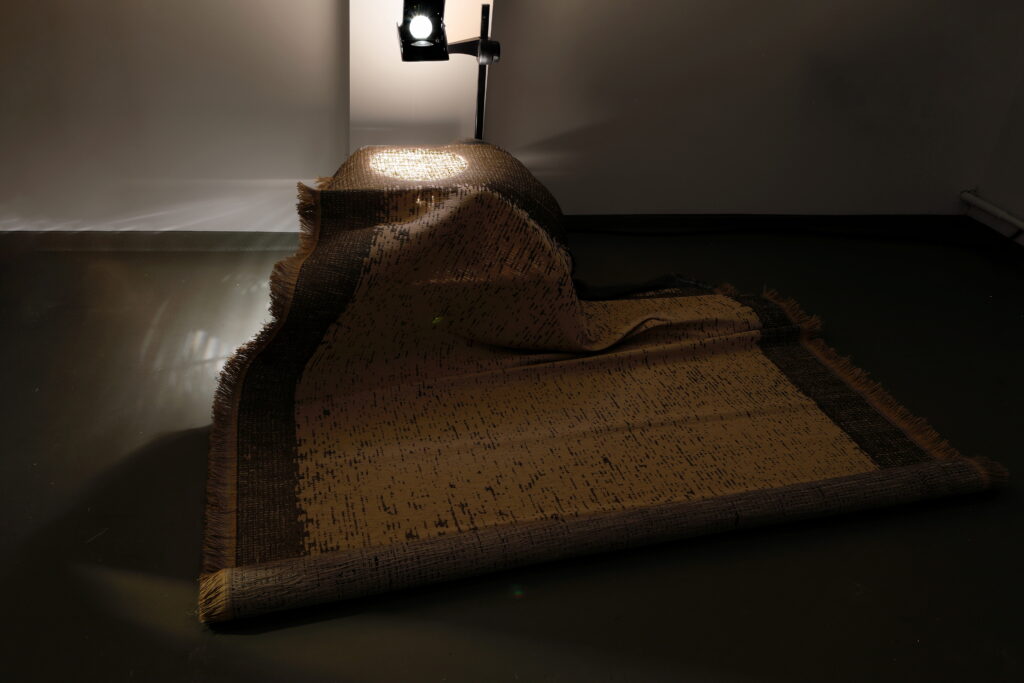
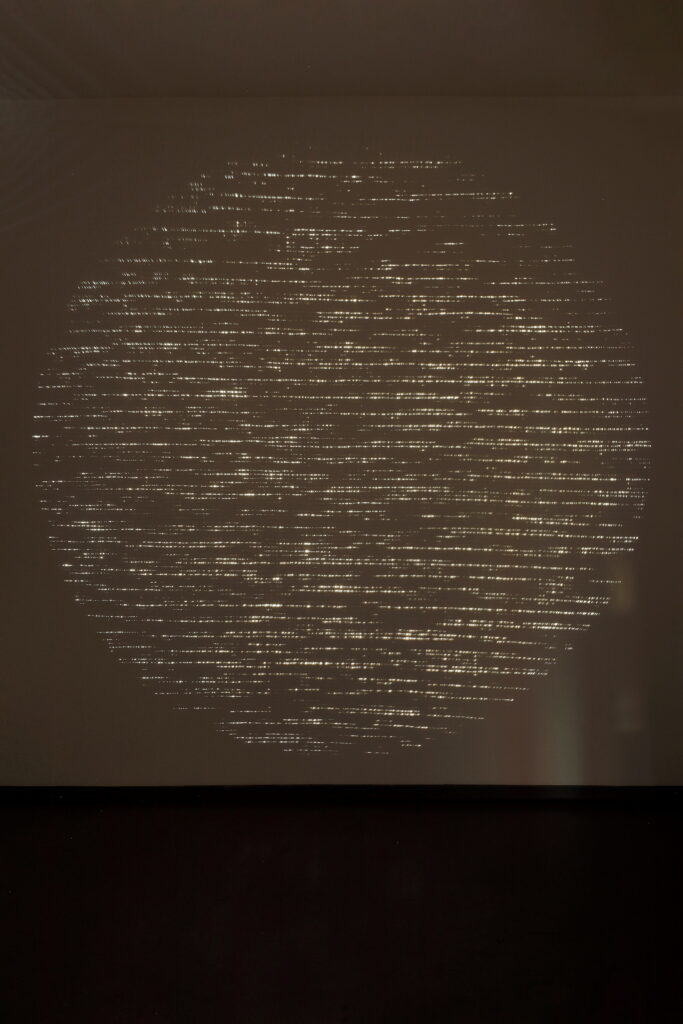
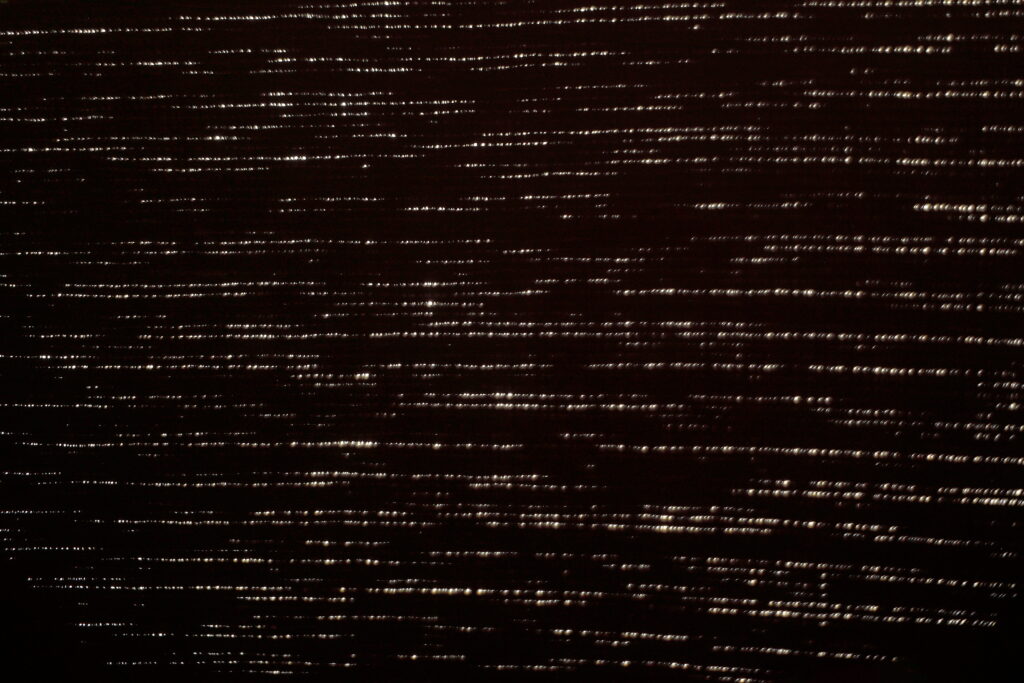
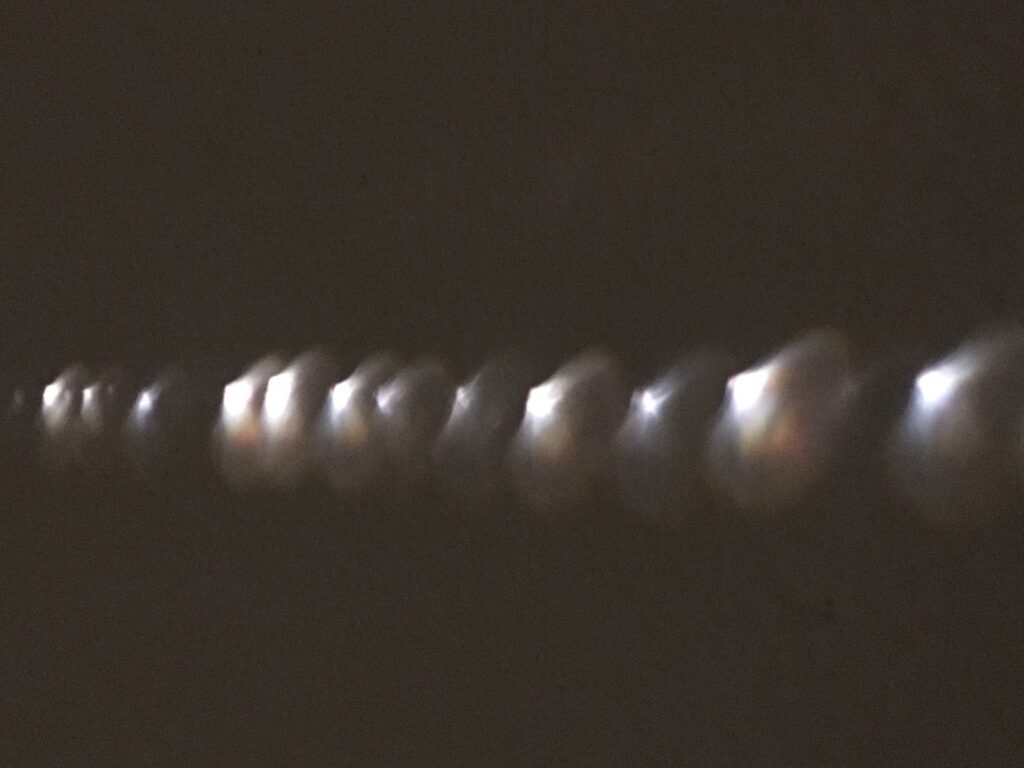 *
*
Marl forms in shallow seawater, mainly in warm, tropical climates. It is made up of the calcareous skeletons of small animals. After the animals die, the calcareous skeletons settle. These accumulate on the bottom of the sea to form a thick layer of calcareous sediment.
**How flintstone formed is still a mystery. Flintstone has been a crucial material in the development of civilisation. Flintstone is a formation of black and white, a code that was once fluid. In the open pit of the ENCI there are 27 horizons of flintstone (silex) in between the marl formation.
Click HERE to see the video about the proces
CFor the past year, Aliki van der Kruijs has been making a weekly pilgrimage to the ENCI quarry in Maastricht. Once an important excavation site for marl stone, it has recently become a nature preserve. There is only one available footpath through the quarry. The ritual of making the walk each week reminds her of the continuous back and forth motion of preparing a warp.
The textile work departed from a colour research to the different stages and shades of marl. Depending from where in the 70 million year vertical timeline of the quarry the material is taken. With real marl a set of silk screens are made that became a filter. In this filter a form of ‘language’ appeared by itself by holding it to the light that revealed the correspondence between the grains of sandstone and the open grid of the textile. This language reminds of code, of clay tablet, of signage, of QR, of weaving code.
Based on this language retrouvè, a number of weaving codes were produced and applied on a jacquard loom to produce a tapestry. The tapestry is woven with paper and flax, the most ancient used materials in communication.
During the open studio’s of the Jan van Eyck academie a spatial installation was created by projecting light through the tapestry. In the light etching the wall, shell-like formations were discovered, resampling the source material of what the marl consists of.
